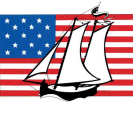What did sailors eat and drink in 1812?
 For long voyages, food needed to be preserved somehow, and that meant salted, pickled, smoked, or dried. Many foods cannot be preserved with these methods, which meant that the sailors’ diet was pretty monotonous. Within a week of leaving port, the fresh provisions were gone, and meals consisted of the same items over and over. Hard biscuits, pickled pork, salt beef, cheese and butter were staples, along with peas, raisins, oatmeal, and d
For long voyages, food needed to be preserved somehow, and that meant salted, pickled, smoked, or dried. Many foods cannot be preserved with these methods, which meant that the sailors’ diet was pretty monotonous. Within a week of leaving port, the fresh provisions were gone, and meals consisted of the same items over and over. Hard biscuits, pickled pork, salt beef, cheese and butter were staples, along with peas, raisins, oatmeal, and d
ried salt codfish.
Barreled water quickly turned bad, so sailors drank “small beer” — with an alcohol content just high enough so that pathogens could not survive in it.
Larger ships had better-equipped galleys, and meals could be baked or roasted, but most food was boiled, and this is why the vessels carried so much fresh water. The beef was so heavily salted, to keep it from going rancid, that it was necessary to boil it in fresh water to make it edible.
Mariners who habitually made long voyages were aware of the connection between diet and scurvy by 1812. But the long cruises made by some privateers, and the lack of friendly ports they could visit for fresh provisions, meant that scurvy and provisioning in general were always a concern.
Although the food sounds awful, in the Royal Navy it was rarely complained about. Most common British sailors ate better on board ship than they would have eaten back home. For a New Englander signing aboard a Salem privateer, however, the shipboard fare was probably a step down from what he was used to.
Want to see more posts like this one? Check out our Facebook page: https://www.facebook.com/schooner.fame and Instagram account “SchoonerFame”!
